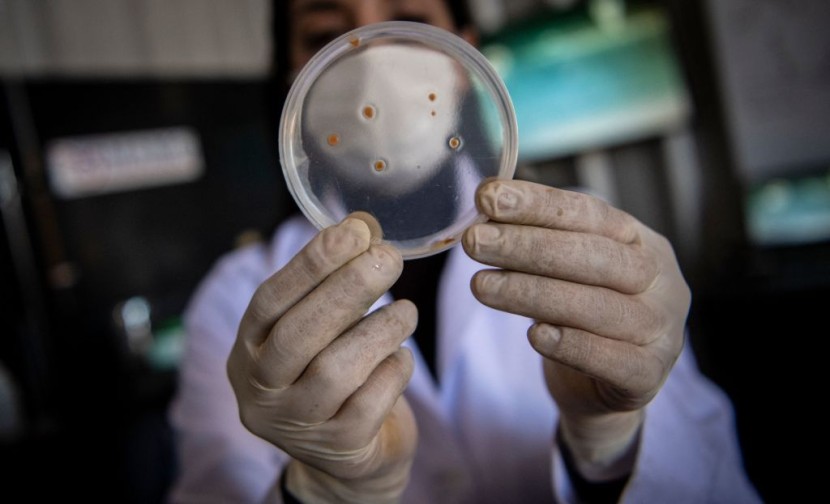
Federal health officials verified on Friday that a Nebraska boy who had recently swam in a river close to Omaha died from a rare infection caused by a brain-eating amoeba.
According to the Douglas County Department of Health in Omaha, the kid named Easton Gray had the naegleria fowleri amoeba, which was confirmed by the Centers for Disease Control and Prevention.
Brain-Eanting Amoeba Cases in US
Authorities on health think Gray contracted the illness when swimming in the Elkhorn River on Sunday, a few miles west of Omaha. By Friday afternoon, a GoFundMe page had roughly $27,000 donated for his family.
When swimming in or diving into lakes and rivers, people often become infected when water carrying the amoeba enters the body by the nose. There have also been reports of other sources, such as contaminated tap water in a community near Houston in 2020. According to KAKE.
Primary amebic meningoencephalitis, an amoebic illness that has been deadly in 97% of documented cases, has caused two deaths in the Midwest this summer. After swimming in Lake of Three Fires in southwest Iowa in July, a citizen of Missouri passed away from the infection, according to health officials.
About three cases of naegleria fowleri infections are reported in the United States each year, according to the CDC. In the US, 154 cases were recorded between 1962 and 2021, but only four people survived. Globally, just roughly 430 cases have ever been recorded.
What Is Naegleria Fowleri- Brain-Eating Amoeba Illness?
Single-cell organisms called brain-eating amoebas often flourish in warm freshwater lakes, rivers, canals, and ponds, however they can also be found in soil. They move into the brain after entering the body through the nose. According to the CDC, people typically get the disease when swimming in lakes and rivers. Only 31 cases of brain-eating amoeba infections were documented in the US between 2012 and 2021.
In Texas and Florida, where the temperature is warm and water activities are common, more than half of the infections took place. The amoebas' nickname comes from the way they feed on brain tissue after being pushed up the sinuses by a surge of water and cause damage to it. However, the microorganism feeds on bacteria when it is submerged in water, as per NY Times.
At the press conference, Lindsay Huse, the director of the Douglas County Health Department, noted that the recent drought and heat in Nebraska had made it easier for the organism to thrive in the river.
Drought is more likely as the world warms. Higher temperatures can alter the availability of water for agriculture by drying out the soils and vegetation and making more precipitation fall as rain than snow. The state epidemiologist, Dr. Matthew Donahue, said in a statement that while recent cases have been found further north, the majority of brain-eating amoeba illnesses still occur in the South.
Brain-Eating Amoeba: Symptoms and Prevention
The University of California, San Diego's Dr. Anjan Debnath, an expert on parasitic infections, explained to DailyMail.com last month that since the condition is so uncommon doctors frequently mistake its symptoms for meningitis, wasting time that might be spent treating the parasite.
According to Debnath, the amoeba grows in temperatures of about 115 degrees Fahrenheit, which means that it will be most active on the warmest summer days in regions where extreme heat is not unusual. He clarified that it enters through the olfactory nerve in the nose, providing a quick and direct path to the brain. It is likely to cause illness if water containing the amoeba gets into the nose.
However, drinking water orally is safe since stomach acid is powerful enough to destroy the amoeba. It may take one to nine days for symptoms to appear once an individual's olfactory nerve is exposed. Within five days of the onset of symptoms, they often pass away.
He says there are two phases to the illness. The initial symptom, which includes a headache and other flu-like symptoms, is rather modest. This implies that a physician could not even notice an amoeba infection unless they are aware that a patient has been swimming in contaminated water.
Once symptoms have progressed to the second stage, a person will begin to have serious neurological problems, such as seizures. The infection will then probably be discovered by a doctor through a spinal fluid examination. By then, a person has probably already experienced symptoms that make death all but certain. Debnath nonetheless cautions against swimming in untreated water during the summer, especially in locations like Florida and Texas where temperatures may soar extremely high, despite the fact that these cases are uncommon-on average, fewer than three are found each year.
Related Article: Nebraska Officials Suspect 'Brain-Eating Amoeba' is Behind Death of Child Swimming in a River
@YouTube








